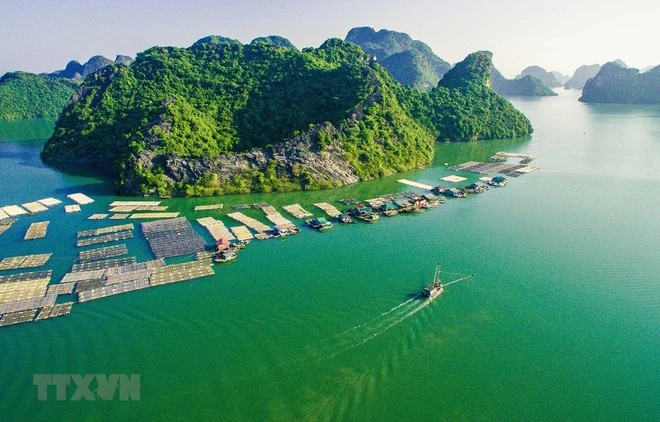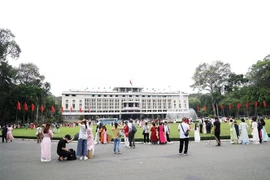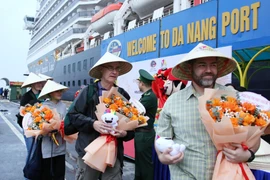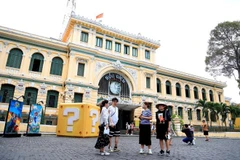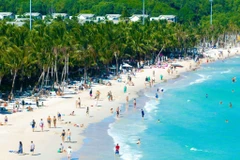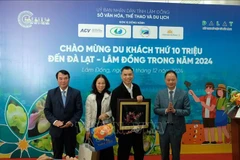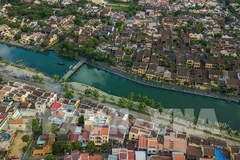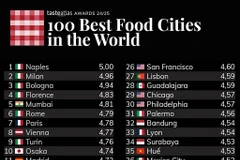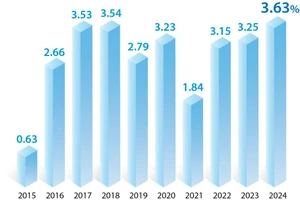Hanoi (VNA) – With significant growth in both the number of visitors and revenue in recent years, Vietnam's tourism sector has increasingly affirmed its important position in the nation's socio-economic development.
However, to become a spearhead economic sector as outlined in the Political Bureau’s Resolution No. 08-NQ/TW dated January 16, 2017, the tourism sector must strive to overcome many barriers and challenges, according to experts.
In 2024, tourism was a bright spot in the economic landscape of Vietnam, achieving impressive results with significant growth compared to the previous year. The country welcomed approximately 17.5 million international visitors, up 38.9%, and served 110 million domestic tourists, up 1.6%, earning revenue of 840 trillion VND (33.09 billion USD), up 23.8%.
Notably, Vietnam continued to receive recognition from the World Travel Awards as “Asia's Leading Destination,” “Asia's Leading Heritage Destination,” and “Asia's Leading Nature Destination.”
Pham Van Thuy, Deputy Director of the Vietnam National Authority of Tourism (VNAT), said that a crucial factor for tourism development is a breakthrough in building, amending, supplementing, and issuing legal documents.
Currently, the processes, procedures, mechanisms and policies related to tourism development still involve many steps and cost much time. State management has not kept pace with reality, especially regarding new tourism forms such as adventure sports tourism and agricultural-rural tourism.
Moreover, inter-sectoral and inter-regional coordination remains inconsistent, infrequent, and lacking in coherence. Many localities with tourism potential still lack clear development orientations, while some areas with limited potential are determined to develop tourism as a spearhead economic sector, leading to widespread and ineffective investment, causing wastefulness.
Additionally, the system of tourism products is still overlapping; service quality is not high; investment resources for tourism are low compared to development requirements; and funding for promotion and advertising is limited, thus failing to create high competitiveness.
Furthermore, the tourism environment in Vietnam still has many issues: numerous tourist sites are exploited spontaneously, lacking reasonable investment planning and management; along with the emergence of zero-dong tours and illegal tour guides, which impact the reputation and image of Vietnam as a destination.
According to Le Thanh Liem, Chief Inspector of the Ministry of Culture, Sports and Tourism, in 2024, the ministry deployed 20 inspection teams to various establishments. Meanwhile, 14 provincial and municipal Departments of Tourism inspected and handled 404 organisations and individuals for violations, with a total fine exceeding 2.5 billion VND. This indicates that non-compliance with tourism laws remains quite common. These are the "bottlenecks" that need to be swiftly addressed.
Chairman of the Board of Directors Vietravel Nguyen Quoc Ky said after the COVID-19 pandemic, competition among countries is not only about promotion and advertising but also about policies and national strengths. It is time for Vietnam to focus on enhancing policy competitiveness to create a launchpad for economic development, he said.
It is necessary to review shortcomings of the Tourism Law to amend, supplement, and eliminate difficulties for businesses, Ky said.
Given that only 45% of the direct workforce is professionally trained in tourism, while 35% are trained in other fields and 20% have received training, Ky emphasised the need for substantial investment in human resource development.
Dr. Nguyen Manh Hung, Deputy Director of the Social Affairs Division of the Party Central Committee's Economic Commission, said that a transparent legal environment is needed to support and encourage businesses to actively promote their role as a driving force for tourism development. It is also necessary to have mechanisms and policies to form large enterprises with ensured access to capital and technology.
Hung emphasised that there is an urgent need for digital transformation in tourism, across levels, sectors, localities, and businesses, as well as continuing to improve visa policies to attract international visitors to Vietnam.
Under the national tourism system plan for the 2021-2030 period, with a vision to 2045, Vietnam aims to welcome 25-28 million international visitors and serve 130 million domestic tourists by 2025, contributing directly 8-9% to GDP.
To realise these goals and turn tourism a spearhead economic sector, VNAT Director Nguyen Trung Khanh said the country needs to take comprehensive solutions.
Ministries, sectors, localities, businesses, and the community need to closely and systematically cooperate, while priority policies should be established for tourism infrastructure development to create large-scale, high-class tourist areas capable of competing with other countries, he said.
The official added that promotional and advertising efforts must be intensified, combining both traditional methods and digital platforms./.
